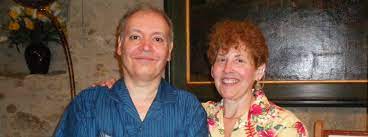
JOESEPH SIMON: 2023 finds the great silent movie Metropolis returning to the public domain. The movie found itself in a rare situation where a property is taken out of the public domain and then returns. Metropolis re-entering the public domain means people can now write stories incorporating Metropolis into their own creations.
You have actually accomplished this a number of times at places as big as DC Comics using characters as popular as Superman, Batman and Wonder Woman, on to your work at Hexagon featuring legendary French heroes and villains who have been around just as long as Superman exist! Let’s create the setting before we go into the details of these stories. Who is Fritz Lang to you, and what was the film, Metropolis to you?
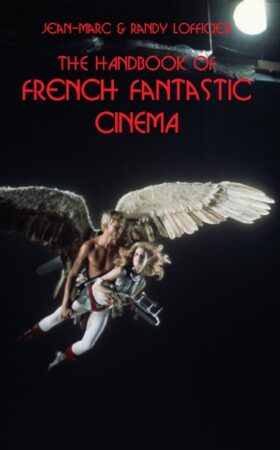
Jean-Marc Lofficier: I am and always have been a cinephile. Therefore Fritz Lang was and is a revered master, just as much as Abel Gance, René Clair, Maurice Tourneur, etc. As a matter of fact, Randy and I just released a book entitled The Handbook of French Fantastic Cinema (ISBN 978-1-64932-166-4) in which we explore our passion for genre films. Metropolis, of course, was a German film, but nevertheless a classic. I always wonder if the name of Metropolis itself hadn’t been borrowed by Jerry Siegel when he created Superman? I never read anything on the topic, maybe it was a coincidence, but it had struck me as amusing to compare Fritz Lang’s Metropolis with Clark Kent’s. That was the seed of the idea, which was to transplant the major DC heroes into a universe made up of German expressionist films.
1st: For those who are allergic to the silent film era, there is an official prose paperback of Metropolis written by Fritz Lang’s second wife, Thea Gabriele von Harbou (who fascinatingly also wrote scripts for FW Marnau, Carl Dreyer and other German greats.). It also happens that Thea wrote the Metropolis script for which Lang directed.
Have you read Thea’s penned book. If so, how important were the details in the book to you for what you would later incorporate in the comics featuring Metropolis in them?
JM: Absolutely, yes! At the time some publisher had reprinted a version of her book in English lavishly illustrated by Mike Kaluta. I used that as a reference for some of the pseudo-historical details and background of the universe. One thing that had struck me was that Metropolis appeared to exist as an independent city-state. Where are the other cities? Who are they trading with? This conveys an idea that we are far in the future, perhaps after centuries of war, with a few isolated cities striving to survive. I thought of William Hope Hodgson’s The Nigh Land, Jack Vance’s The Dying Earth, and Arthur C. Clarke’s The City and the Stars as fictional templates for that world, and realized there was nothing in Von Harbou’s original novel that contradicted this interpretation.
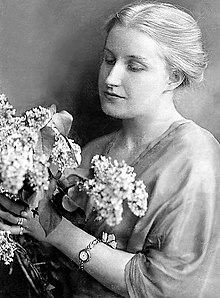
In the end, as you know if you’ve read the trilogy, I settle for a far bolder interpretation, in part because I didn’t want to copy the above-mentioned authors. [SPOILER] In my interpretation of that universe, Metropolis is on a terraformed Mars far in the future. Earth is a polluted wasteland where the only life is in the oceans. Man fled to Mars and Metropolis is one of the few cities (there are others) – the first city – that was built on the Red Planet. This background is hinted at in #2 and fleshed out some more in #3, but would have been further explored in books #4 and #5 which sadly did not happen.
1st: What did it mean to you to use Metropolis in these books we’re about to discuss?
JM: The overall story could exist without the DC characters, but it couldn’t without Fritz Lang’s and Thea Von Harbou’s works. In then end, the trilogy is the story of Man, of Metropolis, but not of Superman, etc. I share the same conception of History and the powerful social forces moving it along that Lang and Von Harbou had. It’s a little like Isaac Asimov’s Foundation. The Foundation is the hero; it’s more important than Salvor Hardin, Hober Mallow, and other characters.
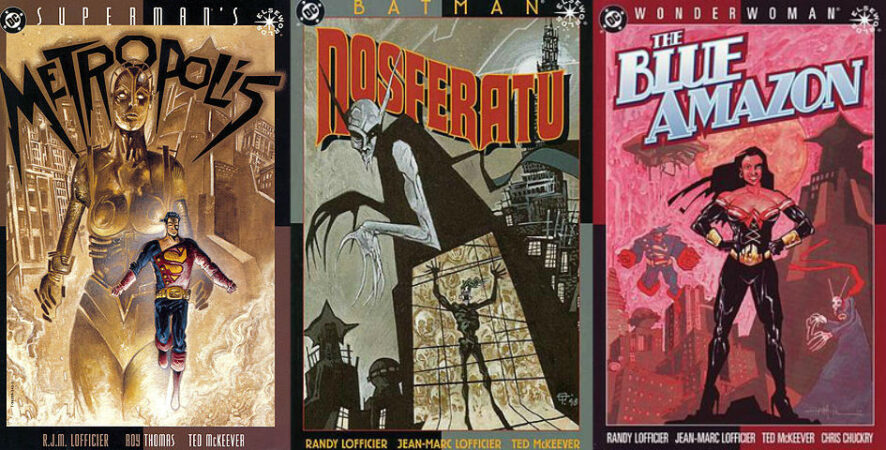
1st: Let’s talk about the book American readers are likely to know, first. With your wife, Randy (plus Roy Thomas for Superman’s Metropolis) as collaborators, you wrote a trilogy of books (as part of DC Elseworlds). Each book features a DC hero in a setting of classic German expressionist films. In Superman’s case, we see Superman re-imagined in the world of the film of Metropolis, Batman re-imagined in the world of the Cabinet of Dr. Caligari and Nosferatu, and Wonder Woman in the world of The Blue Angel. Each book was illustrated by the amazing Ted McKeever.
To further the excitement, you re-imagined all these to exist together. Each book continues into the next, creating a whole new Earth for DC heroes to exist in. How did this idea come about, how was it received by DC and why was Roy on just Superman’s Metropolis?
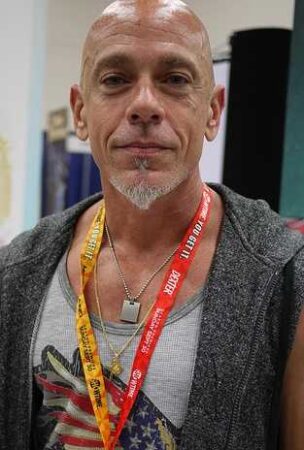
JM: I brought in Roy more or less as a trade: I had some part in the overall plotting of his Superman/War of the Worlds Elseworld and he did that one alone and I bought him on Metropolis, which he had been instrumental in selling to DC. Here, I must praise the editor, Mike Carlin then Joey Cavalieri, who both had the vision and the faith to let us embark on this totally bonkers of an idea.
Bringing in Ted McKeever was Mike’s idea, and we worked very well together. I think Roy’s preference would have been for someone like Kaluta, but personally, I though Ted brought a very unique expressionist vision to the project, drawing his inspiration from the very films that inspired the books.
1st: How was working with Ted? As you mentioned, he is very much, uniquely his own artist with an expression of the pencil and pen that is very idiomatic to Ted. He did great at giving the trilogy a visual identity of its own.
JM: Working with Ted was super easy. We worked according to the so-called Marvel method, that is to say he received a very detailed plot, and we added the word balloons based on his pencils. The “visual identity” you mention is drawn from the visual style of the films, so it was both appropriate and very original in the context of comics. To be candid, I think the public, for the most part, didn’t get it and a lot of readers, if one is to believe the internet, didn’t much care for it. Other artists, however, loved it. My friend Steve Bissette wrote a glorious review of Book #2.
1st: Not only was Superman re-imagined in Superman’s Metropolis, a portion of his supporting cast and a specific villain were too. I enjoyed that you included Dan Turpin. Who else did you “cast” for this book and why them?
JM: That was the easy part. There were plenty of supporting characters in the DCU that could be used to impersonate various characters from the films. The key figures were harder to cast: Luthor as Rothwang, of course, Dr. Psycho in #3, the Nosferatu in #2, etc. When you work with archetypes, it is not too difficult to find appropriate substitutes.
1st: It is interesting that your Jon Kent ignored his son’s pleas much like Kryptonians ignored Jor-el’s. Was that an a counterpoint or symbolic?
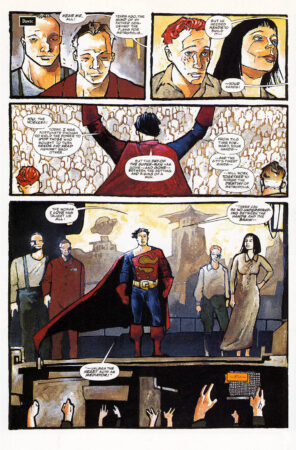
JM: You are totally correct: our Jon-Kent is much more Jor-El than he is Jonathan Kent. He is one of the three founders of Metropolis, the great architect as it were. Unlike Jor-El, he isn’t shunned, however, but he merely gets sidetracked by his rival, Luthor, who also happens to be infatuated with Martha. So in that respect, the DC canon is changed a lot. I simply couldn’t make the Metropolis plot work with the Siegel & Shuster origin story; I had to create a more melodramatic structure, more in line with 19th century novels (Dickens, Balzac, etc.).
1st: Was there a deeper meaning to Lutor’s heart being replaced by a mysterious green stone? How did that mysterious green stone get into Batman: Nosferatu?
JM: The green stone is, of course, kryptonite, and our Lutor is, in that respect, a version of Metallo. That was deliberate. In this world Superbaby landed on Mars in that same far future, and was adopted by Jon-Kent and Marta. Likely, some kryptonite – at least, that chunk – fell as well, and Lutor got it. After his defeat, it then gets picked up in #2, which contains a deliberate homage to Frank Miller’s Dark Knight.
1st: As already inferred, Superman’s Metropolis continues into Batman: Nosferatu. How much time has passed since the ending of Superman’s Metropolis and the start of this second story of the trilogy?
JM: I never bothered calculating it exactly, but I’d say a year or so, approximately.
1st: Batman: Nosferatu had a far bigger cast that Superman’s Metropolis. Where there any characters that didn’t make the cut that you wish did?
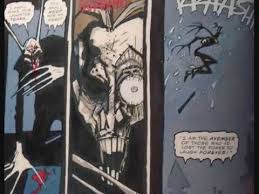
JM: No pretty much everyone I wanted, and more, is here. I had told Ted to add whichever Batman villains he wanted to draw in the Arkham scenes, and he did, and I just had to adjust the dialogue accordingly.
1st: Lutor may be dead, but his presence is still felt throughout the Trilogy. What was his relation with Dr. Arkham, the Laughing Man and Psykho before his death?
JM: Let’s not forget that Lutor was one of three founders. He was there at the beginning. The time frame is left purposely vague, but we may be talking hundreds of years. These people are not like us, they live longer. They resurrected or grew or brought up all the other survivors they brought from Earth, so virtually everyone owe their lives and existence to Jon Kent, Lutor and Paula Von Gunter. So, Dr. Arkham (who in my original plot was meant to look more like Hugo Strange), Dr. Psykho and others are like the second-tier villains who all obey the Kingpin’s orders at Marvel. Lutor’s death creates a power vacuum which in turn drives the events of Books #2 and #3.
1st: Superman’s Metropolis and the other two books in the trilogy are obviously inspired by Metropolis. Batman: Nosferatu was inspired and influenced by the Cabinet of Dr. Caligari and Nosferatu: A Symphony of Horror.
For many, the films The Blue Angel and Dr. Mabuse the Gambler will be lesser known than Metropolis or Nosferatu. Tell us about these films and how did the films The Blue Angel and Dr. Mabuse the Gambler influence and inspire Wonder Woman: The Blue Amazon?
JM: Well, the films themselves can be researched easily; and public domain copies can be found on the internet. They are all wonderful pictures, true classics. I suppose the trick was for each book, to find one or two films that would inspire the story and the visuals. But honestly, I didn’t find it difficult at all. The images are iconic: Marlene Dietrich as the Blue Angel, Nosferatu, the weird look of Caligari… We all recognize them at first glance. They’re like the image of Superman lifting the car in his very first appearance. They’re archetypes.
1st: In Wonder Woman: The Blue Amazon a lot of secrets are uncovered. Secrets that are very different than the film. Is this because merging the ideas of these movies with the DC Universe? Or is there a layer of the film(s) that helped bring about these secrets?
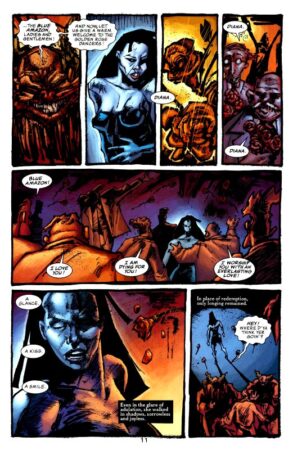
JM: The unveiling of the universe in which the story takes place was always there, from #1. That was my idea, and had nothing to do with the films. The pictures provided basic plot elements, and visuals. But the overall history of that universe – still left unfinished today – that was a different thing altogether.
1st: It is interesting that you used Paula von Gunther. Shes not a marquee villain of the Wonder Woman, but she is from the original stories and has managed to survive. What is your impression of her DC Universe character and why she isn’t a top rated villain? What brought her to your attention for your version of Metropolis?
JM: I’d say that was a rather obvious choice in the context of our universe. Dr. Psykho was easy to cast, but I needed a third architect. As luck would have it, the character of Paula was there, in the WW canon, and there was no one else who could have filled that slot better.
1st: Likewise, it’s hard to have Wonder Woman without Steve Trevor. Yet he never has received top billing at DC. He’s kind of a given when you mention Wonder Woman. Nevertheless, he plays second fiddle to Wonder Woman and often to others in the title. What is your impression of the DC Universe character and what brought your attention to him for your version of Metropolis?
JM: To be honest, I’m sorry to say that he doesn’t play a much better role in the trilogy than it did/does in the WW books. He really is condemned to forever be the damsel in distress, isn’t he?
1st: For those in the details of continuity, your trilogy is the first and only story of Earth-1927 within the DC multiverse. With all the different DC resets since the designation of Earth-1927, do you think it exists within the current DC multiverse now?
JM: I have no idea. I’d very much like to return to it and finish the story someday, but I suppose it’s very, very unlikely it will happen. Still, if anyone at DC is reading this…
1st: (DC, that would be awewsome!)
How much time passes from the start of Superman’s Metropolis and the end of Wonder Woman: The Blue Amazon?
JM: I didn’t calculate that either, but at most 1 or 2 years pass between each book, so the whole trilogy spans 4 or 5 years in fictional time.
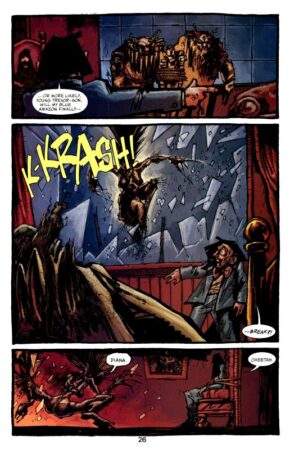
1st: Death plays an important role in each story of the trilogy. Indeed, it happens a lot more than in the DC Universe (especially within the span of three books to valued characters.) If you had the opportunity to continue the adventures of Earth-1927, would the dead stay dead?
JM: Yes. No unexpected resurrections.
1st: You did manage to keep people like Jon Kent and Lutor presences felt even after their death without having to resort to “rebirths”. What other secrets of Jon Kent and Lutor (or any of the other deaths that occurred in the trilogy) were left to be discovered if more stories were to be told?
JM: Ah, well… Therein lie the sequels… One is about what the original Martians may have left behind, and the other is what life still exist on Earth… And what will these two worlds become once they recontact each other and emerge from the historical amnesiac slumber engineered by Lutor.
1st: I’ve read that there was an intention of more than just the trilogy of stories that were published. What’s the behind the scenes details of this? It sounds like the big seven of the JLA was going to be covered in one way or another. Were these ideas summarized in Wonder Woman: The Blue Amazon? Or was there a lot more coming in the storytelling?
JM: Yes, by the time I got to Book #3, I told DC I needed 2 more books to complete the story, but the sales didn’t justify the investment, Ted rightly felt he’d done his job, I don’t think DC wanted to go on without him, so it didn’t come to pass, and honestly I can’t blame DC. It was the right decision, but I regret it.
But yes, there was a lot more to come. As I said, Book #4 entitled THE GREEN LIGHT would have been about the ancient Martians and would have had version of The Flash, Green Lantern and the Martian Manhunter. It was loosely based on Leni Riefenstahl’s film, The Blue Light, Book #5 was about the heroes returning to Earth after centuries have past and would have had a female version of Aquaman, and drew its inspiration (and its title) from G W Pabst’s Queen of Atlantis.
1st: The founders of your DC Metropolis are Jon Kent, Lutor, and Paula von Gunther. One of the fascinating things about your trilogy is how each story carry’s over and builds the history and cast. You find out more information as each book tells it story. Due to the idea that there were even more stories, what details of Metropolis didn’t get published that you really regret not being told?
JM: In addition to the above, we would have revealed the existence of six other cities on Mars, all named after legendary cities: Ys, Shamballa, etc.
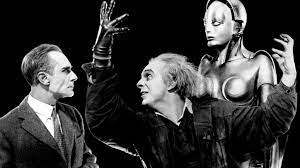
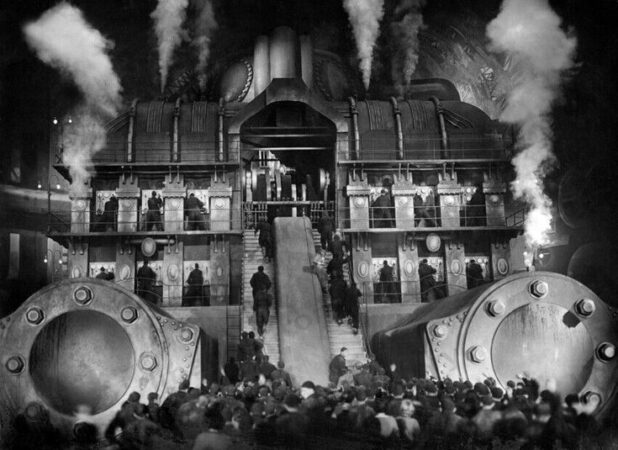
1st: What a wonderful way to re-imagine these iconic super heroes. The trilogy allowed you to contextualize them within the makings of German expressionist films. What was it like to use American heroes in this way with German films as a French creator?
JM: I wouldn’t read too much into it. It started as a stylistic exercise really, which grew into a science fiction story, one which to a large extent I could rewrite using different heroes. The DC characters are iconic indeed, and by the time the story is over, all 7 original members of the JLA are accounted for, but they’re not essential to the story.
1st: There are many accounts of Batman being influenced by the Shadow, Superman by Doc Savage, and other influences these popular heroes are inspired by. There are a wide variety of interesting commonalities linking super heroes such as Superman and Batman to other influences such as the these German expressionist films. The very name of the film Metropolis points to an obvious one.
Your knowledge of international pulp literature and other media is vast, I’m curious, starting from the influences from the above stories and expanding out, what are the not so obvious in foreign publications that comic fans should know about?


JM: For a long time, people thought that all popular heroes had transitioned from Greek legends to Medieval tales to British and American pulp lit. Jason, Hercules, the Round Table, then Holmes, Tarzan, John Carter, Superman, Batman, etc, etc. This, of course, true, but totally ignores the fact that there were parallel, equally popular and inspired characters. My “bailiwick” is French fiction and I can point out to a long line of adventurers and super heroes (or villains) going back to the 19th century. Randy and I wrote two books, Shadowmen 1: Heroes and Villains of French Pulp Fiction and Shadowmen 2: Heroes & Villains of French Comics, which offer a sampling of the diversity of these characters, which often owe nothing to their US counterparts.
1st: Speaking of foreign publications, specifically French creations, your other Metropolis re-imaginings was with In the Shadow of Metropolis featuring Guardian of the Republic and Doctor Omega plus a whole host of others. Published by Hexagon Comics, In the Shadow of Metropolis, you wrote a comic packed with ideas and characters. As dense as a story by Alan Moore or Phillip Jose Farmer given the same page count!
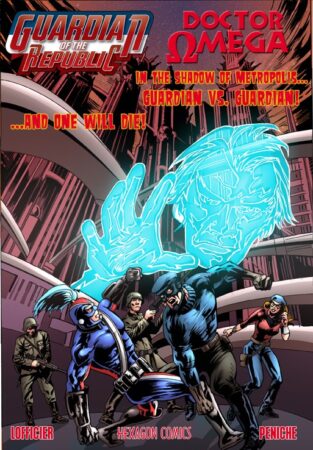
JM: Yes, I wasn’t quite finished with the story of Metropolis, was I? First, it needs to be said that in that comic, Metropolis isn’t on another planet, it is in a pocket dimension which is, in effect, threatening to grow and absorb other dimensions. So it’s very different from our DC version.
Two, this Metropolis is the result of four German characters all taken from other literary sources: Rotwang, of course, but also Mabuse the crime-lord, Count Orlok the vampire (Nosferatu) and Ohisver Muller, from a novel of the same period by Czech writer Jan Weiss.
Three, the Hexagon heroes (in this case, two versions of the French Guardian of the Republic) are brought in and assisted by Doctor Omega, a space traveler created in 1906 by Frech author Arnould Galopin which present some fascinating similarities with Doctor Who.
The goal, of course, is to defeat the villains and stop Metropolis which is like a cancer on the multiverse.
1st: Readers will be more familiar with your Metropolis inspired work at DC, to catch them up to the great things your doing, what is Hexagon Comics?
JM: Hexagon Comics started in France in 1950; it is a vast fictional universe of 300+ characters quite comparable to Marvel or DC’s – more like DC’s, really. I took over as editor in chief in 2010 and launched both a reprint program and the creation of new stories, quite a few of which are now translated and available in English on our website or on amazon – including the issue you mentioned.

1st: In the Shadow of Metropolis features a few characters such as Guardian of the Republic and Marianne who are popular in the Hexagon universe. Then there is the dimensionally fragmented villainy of Lord Illusio. What is it about these characters that draw will excite new readers?
JM: Well, I would think fans who enjoyed the DC Elseworld Metropolis trilogy might enjoy this other variant on the theme. It is also a good opportunity to “meet” both the Guardian from WWII as well as its modern-day counterpart. Illusio is a strange creature who lives in the m-branes between universes which we introduced earlier in Strangers #5. Strangers is the lynchpin title of our universe around which everything else kind of rotates. It’s not at all like the Avengers or the X-Men or the JLA; it has a more “universal” scope with a rotating cast and character coming in and out.
1st: It should be noted that this book features the first meeting of the modern day Guardian and the Guardian who was part of the Partisans (Hexagon’s WW2 team of heroes) as well as a heroic sacrifice of one of our heroes. Without spoiling, how was it writing about that fight scene and the sacrifice made in the story?
JM: [SPOILER] Well we always knew the WWII Guardian had to die someday and we wanted him to have a heroic death. This was a perfect opportunity.
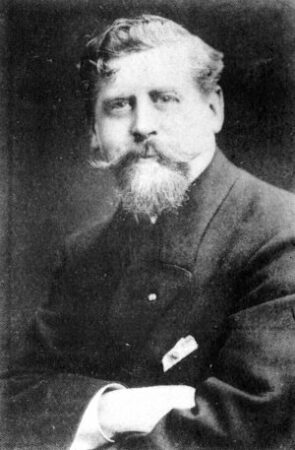
1st: The book’s co-lead is Arnould Galopin’s Doctor Omega. A character with a very interesting history and potentially an inspiration to a very popular British character. Readers of Galopin or Black Coat Press’ Doctor Omega anthology’s should appreciate his appearance here. Who else might be appreciate Doctor Omega? Who is Arnould Galopin?
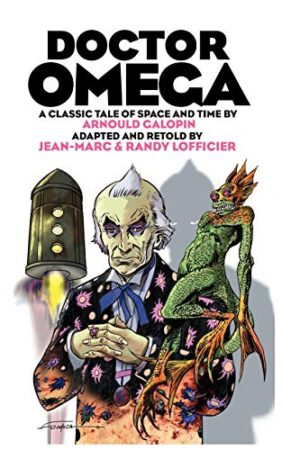
JM: Galopin was a very popular and award-winning writer at the turn of the 19th/20th century. His Doctor Omega is a strange, rather visionary work, which surprisingly (and unexpectedly) remained without a sequel. I think he began the book to capitalize on the French success of HG Wells – First Men on the Moon, in particular – but somehow got carried away and went much further than Wells would have done. To be honest, the plot becomes a tad rambling towards the end. What I also found surprising is that he introduced this eccentric scientist with this weird name who looks just like William Hartnell’s version of The Doctor and has a spaceship in his hangar, but never bothered to give him an origin story.
The character now makes regular appearances in our anthologies Tales of the Shadowmen published by Black Coat Press.
1st: You were obviously influenced by Fritz and Thea’s Metropolis including mad scientist in Rotwang. With a name like Rotwang, what does one expect to be, but a villain? What did you think of Rotwang in the movie? Did he have any redeeming qualities? Could he have made better choices in the move?
JM: I think Rotwang is a terrific character, Visually, of course. His crooked house. He is also a wonderful blend of the scientist, alchemist and sorcerer, so he’s not a mere mad scientist. And the actor (Rudolf Klein-Rogge). Remember that, in the film, he builds the female android because he wants to make a replacement for his lost love, the beautiful woman who eventually chose Fredersen, the master of the city and Rotwang’s rival, instead of him. In our version, these two characters become Jon Kent and Marta. In the film, the woman died while giving birth to Fredersen’s son, Freder, the hero of the film, and Rotwang uses the android to get revenge against both. In my version, Rotwang killed Marta and then proceeds with his plan, but makes his android look like Lois, who is Freder/Clark’s love. So I think it all fits rather well.
1st: How does the concept of the film Metropolis in In the Shadow of Metropolis differ with how you wrote the concepts of Metropolis in your DC books?
JM: As I said, DC’s version is ultimately a far future planetary fantasy. Hexagon’s is a pandimensional tale —two completely different ways of looking at it.
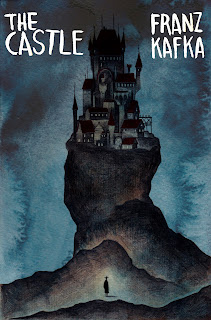
1st: Franz Kafka’s Castle is very well placed in In the Shadow of Metropolis. How old where you when you read the Castle and what kind of impact did it have on you?
JM: I read Kafka as part of my school’s curriculum, at around 17 or 18, I think. I love Kafka in general, but my favorite of his novels is definitely The Castle. It seemed a natural to fit it in the story, as this very ancient, bureaucratic, dust-gathering place monitoring the dimensions — my version of Marvel’s TVA, really. (Which I had a hand in expanding through my creation of the Time Keepers.) I’ll probably reuse it again.
1st: Jean-Luc Godard and Alain Robbe-Grillet’s Leonard/ Orlok from Alphaville. Godard’s film inspired the 80’s pop band Alphaville and the movie was even sampled by Jay Z. Alphaville is also a Brooklyn venue where bands play. How did Alphaville inspire you?
JM: I used Alphaville in a Jerry Cornelius short story (With Mike Moorcock’s permission) which appeared in Tales of the Shadowmen #6. Godard’s mad scientist Leonard Von Braun/Orlok is obviously an homage to Murnau’s Orlok/Nosferatu. In that story, my villains are Von Braun/Orlok, Rotwang, Ohisver Muller and M, like in the Hexagon comic story. But the two stories are very different. However the core concept of an artificial city, Alphaville in one, Metropolis in the other, being a threat that must be contained, is present in both.
1st: Your version of M is a combination of…?
JM: Mostly, the character Dr. Mabuse from Norbert Jacques and Lang’s 1922 film Der Spieler, but I liked reusing the “M” name from Lang’s 1931 film. Let’s also remember that the diabolical player in Alain Resnais’ 1961 film Last Year in Marienbad is also credited as “M”. Visually, in the comic story, he is drawn to look like the actor Sacha Pitoeff from that film.
1st: House of a thousand floors is one of the earliest examples known in European science fiction by Jan Weiss (in 1929). His book uses a range of experimental styles and techniques including linear storytelling that morphs into excerpts of fictitious books, encyclopedia articles, radio broadcasts and an assortment of advertisements, political slogans and other non traditional methods of writing all together to tell his tale. What a fascinating book. How did Weiss writings influence you?
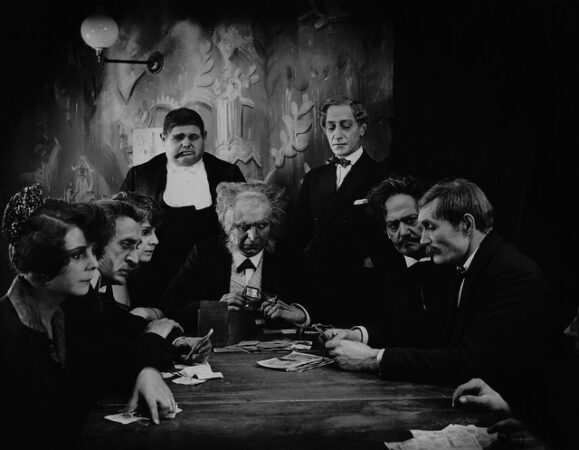
JM: I took the villain, Ohisver Muller, from that book, because it, too, featured a fantastic city like Metropolis and Alphaville. In my short story, I also mention Germelshausen as the place where Last Year in Marienbad is supposed to be taking place, as another “fantastic location”. Weiss’s novel is utterly incredible, quite visionary and ahead of its times. I don’t think many people have heard of it today, which is a shame. I refer to it at the end of the story when the Castle states that its hero, Pierre Brock, has “taken care of” Mullertown.
1st: In the story each of the bad guys bring a piece of the puzzle together that makes everything go their way that otherwise, individually, would not happen. Each brings a uniqueness that is more powerful as a group than otherwise. Things were going good for them, until things didn’t. What led to their downfall?
JM: I would argue that Alphaville, Metropolis, Mullertown and even Germelshausen (which is not Marienbad, but let’s call it that) are unnatural places. They creators built a city that was “perfect” in their eyes (but no one else’s!) and wanted it to exist forever. Of course, that is neither desirable, not possible. It is what Darkseid calls “anti-life” in the DC comics.
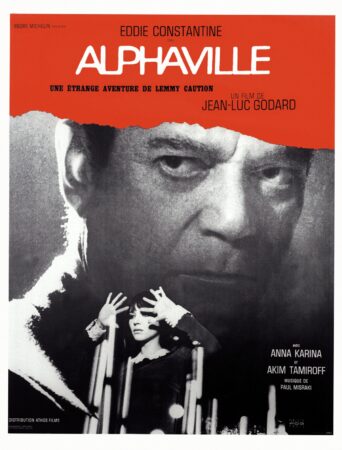
1st: You’re joined by Manuel Martin Peniche doing art. Manuel is also featured in various Kabur, Strangers and other Hexagon titles. He nailed a lot of the characters, did he use character references?
JM: I do send tons of references to my artists. Pretty much everything they might need.
1st: Inspiration and influence are really important to you and to the stories that you wrote for both DC and Hexagon’s Metropolis. How important is inspiration and influence to creativity? How can creators create with inspiration and influence and yet, retain their own voice and be respectful to the sources of inspirations and influence??
JM: I’m probably more likely to borrow from literary sources than most, although Neil Gaiman does it a lot in Sandman, and of course Alan Moore in League of Extraordinary Gentlemen, and credit where it’s due, my mentor and collaborator Roy Thomas did it first – and sometimes we did it together (like Neptune Perkins’ origins in Young All-Stars).
1st: In creating both of your Metropolis’ (for DC and Hexagon), you obviously have respect and a love for the films that inspired and influenced you. Were you nervous at any time in not meeting up to your expectations you set for yourself in writing these stories and how they might be perceived in respects to those influences and inspirations?
JM: I don’t know. It’s up to the readers to decide, in the end. To be honest, I’m always surprised when they get it. My version of Marvel’s Cagliostro, which I named O Bengh, made it into one of their What If…? And I was stunned. I would never have expected it in a million years,
1st: What period of DC Comics presented your favorite depiction of Metropolis? Likewise, what Superman movie and or animation did?
JM: I love all the animated shows WB has done; I think they’re quite faithful to the Silver Age comics, which is why I do love them.
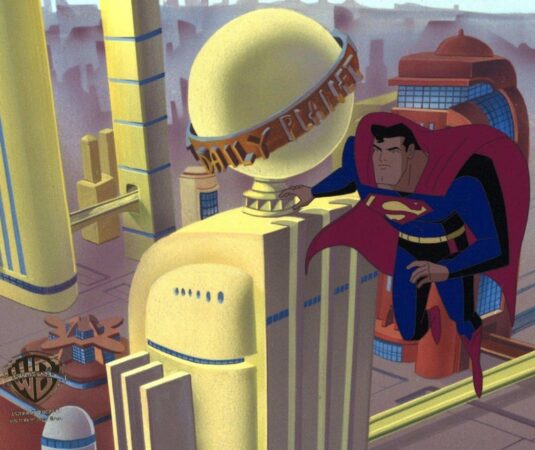
1st: If people who are interested in reading the sources of your inspiration or the continued adventures of many of the character featured in this story, they can read the source material and additional stories published at Black Coat. What books might they try out?
JM: Hexagon Comics are but a click away on amazon. Or you can order them at “http://www.hexagoncomics.com” or ” www.blackcoatpress.com – and most of the Black Coat Press catalog is available as ebooks at $5 or $6 a piece. So it’s not difficult or expensive to widen your horizon.
Thank you Jean-Marc. Both of your Metropolis ideas are fascinating and, after reading, the mind wonders of what could be’s and what if’s. In the Shadow of Metropolis is a great introduction, not only to some of the many interesting ideas you have going on at Hexagon, but serves as a gateway to the amazing German expressionist films and French Fantastic Cinema / literature.
Please note: In the Shadow of Metropolis often goes by Guardian of the Republic & Doctor Omega with online vendors
